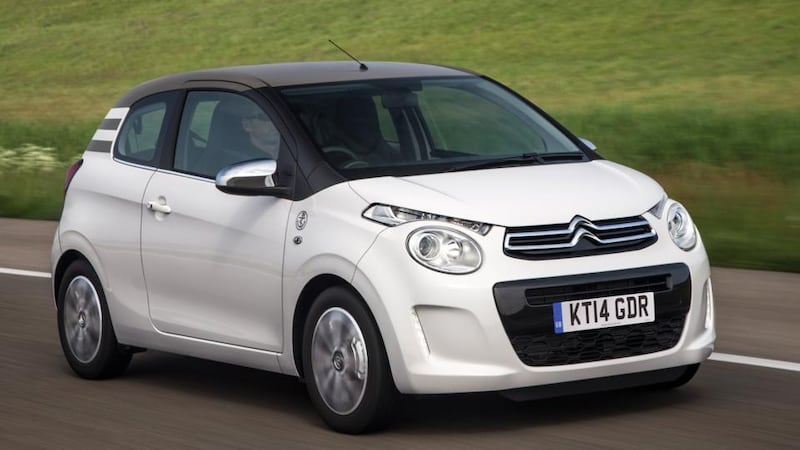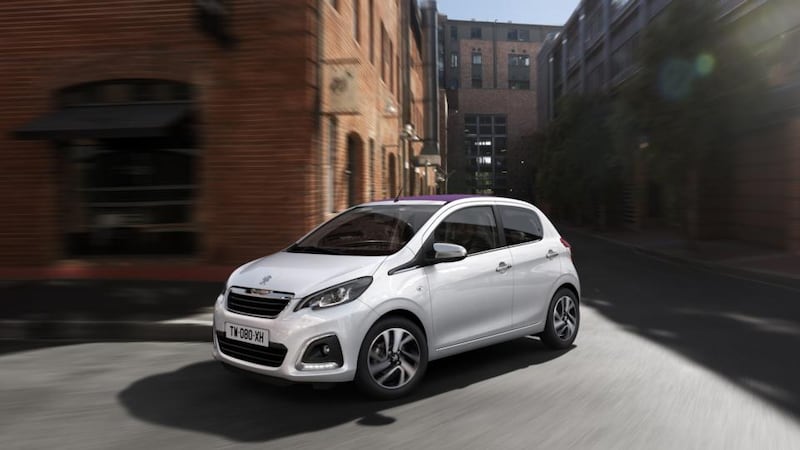By the time you read this, three different car companies will have launched the same car.
As you would expect, Toyota won't be acknowledging any association between its new Aygo and the Peugeot 108, while Citroën will be promoting its new C1 as if it never heard of either.
Obviously, all three will have a different profile, but, apart from styling and the odd touch here and there, there is little that differentiates the three cars. Underneath they are all the same budget city car, designed to be produced as cost-efficiently as possible and to increase penetration into what is a fast-growing market segment, even in Ireland.


This is not the first time the French and Japanese car marques have come together – they first did so with the previous generation of this car – but this time it is more than a toe-in-the-water excercise. All three car brands will be hoping to attract younger buyers and people who want a no-nonsense city car. This seems to fly in the face of the belief that only older people have access to the finance needed for new car purchases and the existing owners of these small cars are all older drivers.
Toyota is even talking about flipping its age profile for its Aygo almost completely, so we will have to wait and see how that plan pans out. In the meantime, expect to see lots of TV ads featuring people who look similar to extras from The Girl With the Dragon Tattoo.
Then there is the price of the two cars we have driven. The current Aygo starts at €10,475 and the Peugeot 107 starts at €11,995. Both cars will now cost at least €12,500, with the Peugeot version likely costing more. These are budget cars, but the potential buyers are also a very price-conscious group, and the starting price here may be quite a challenge.
Small print
The car company profilers also say this group wants better styling and equipment, but where does that leave the entry-level model, which won't be featuring the key attraction of a 7in display screen except as an extra option? The Toyota version won't have a spare wheel either, but the Peugeot will, and this will be reflected in the pricing difference between the two. Another factor is that Toyota will be sticking to its three-year warranty while Peugeot will be offering a five-year one. Differentiating between these cars is about more than styling: the small print is worth watching.
From the moment you open the door there really is no escaping the budget framework in which these cars have been produced. You won’t be feeling the reassuring clunk of metal you get from the estimable Volkswagen Up or the Skoda Citigo. There is a lot of plastic and a generally cut-rate feel to everything. Most people will be opting for the five-door version, but if you extend the two front seats back to accommodate a taller passenger, you will barely fit your hand between the back of the front seat and the rear passenger seat.
The boot too is a seriously limited proposition. You will get the bare minimum in here; the VW/Skoda design offers a good deal more practical space. Also note that this new version of these cars has been designed to offer greater rigidity, and a price to pay for that is an impractically high boot sill. It will be a nuisance for taller drivers popping even a modest weekly shop into the car.
Driveability
The best thing about the Toyota Aygo and the Peugeot 108 is their driveability. Toyota, whose engine powers both, felt a sporty note to the engine would suggest some driving fun in the city, and the car is willing to perform better than the entry-level three-cylinder 68 horsepower engine might suggest. Incidentally, Toyota is only offering the 1.0-litre three-cylinder unit, while Peugeot will also be offering a 1.2-litre version with 82 horsepower.
Once on the road, both cars have a very lively feel to them. They are city cars but they do offer feedback and a degree of fun. What is more surprising is how the noise levels of the car and the structural feel of it have been improved over the previous model, whose ability to tackle a challenging route or a crosswind were indeed worrying. The Toyota engine is certainly zippy and even comfortable at lower motorway speeds. Steering is also well balanced, and even everyday bumps are well absorbed despite the car’s limited track.
Whatever about the car’s engineering and underpinnings, all three companies obviously have to make them look different to appeal to different customer loyalties. Toyota has gone for the funky look,with a large signature X design crossing diagonally across the front of the car. It will be offering limited standard colours such as silver and black, but for another €500 you can customise the car with different-coloured panels.
Cross-generational
Peugeot has gone for the more traditional Peugeot family look, and the car looks like it will have a more cross-generational appeal as a result. When Citroën enters the fray it will be a challenge for all three companies to highlight what it is that makes their car sufficiently different; Toyota's dominant position and network should make the difference here. However, potential buyers should be aware that beneath the skin there is very little to give one the edge over another.
The Lowdown: Toyota Aygo; Peugeot 108
ENGINE 1.0 litre three-cylinder Toyota engine producing 68 hp.
FUEL CONSUMPTION Claimed fuel consumption of 3.8 litres per 100 kms.
EMISSIONS 88 g/km.
TAX BAND A2 (€180 per annum)
PRICE Around €12,500 for the Toyota version and slightly more for the Peugeot
OUR VERDICT These cars may look different but are really the same underneath the skin. Price and warranty period should be key factors to look at.



















